
Wonder Boy in Monster Land, known by its original arcade release as Wonder Boy: Monster Land, is a platform video game developed by Westone Bit Entertainment and released by Sega in Japanese arcades in 1987 and for the Master System in 1988, with a number of other home computer and console ports following. The game is the sequel to the 1986 game Wonder Boy and takes place eleven years after the events in the previous game. After enjoying over a decade of peace on Wonder Land following the defeat of the evil King by Tom-Tom, later bestowed the title "Wonder Boy", a fire-breathing dragon called the MEKA dragon appeared; he and his minions conquered Wonder Land, turning it into "Monster Land". The people, helpless due to their lack of fighting skill, call for Wonder Boy, now a teenager, to destroy the monsters and defeat the MEKA dragon. Players control Wonder Boy through twelve linear levels as he makes his way through Monster Land to find and defeat the MEKA dragon. Players earn gold by defeating enemies and buy weapons, armor, footwear, magic, and other items to help along the way.
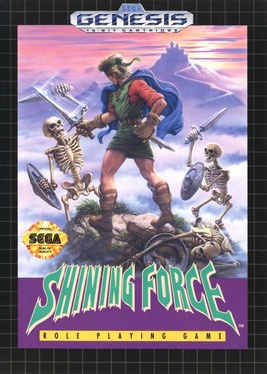
Shining Force is a 1992 turn-based tactical role-playing game for the Sega Genesis console. It is the second entry of the Shining series of video games, following Shining in the Darkness. While primarily a traditional fantasy-themed game, it contains some science fiction elements.

Earthworm Jim 2 is a 1995 run and gun platform video game and the sequel to Earthworm Jim, and the second and final game in the Earthworm Jim series developed by original creators Doug TenNapel, David Perry and Shiny Entertainment. It was released in late 1995 and early 1996 depending on region and video game console, initially being released for the Sega Genesis and Super Nintendo Entertainment System, before being ported to other platforms.
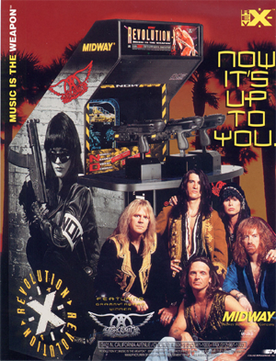
Revolution X is a shooting gallery video game developed by Midway and released in arcades in 1994. The gameplay is similar to Midway's earlier Terminator 2: Judgment Day, but is themed around the band Aerosmith. The oppressive New Order Nation regime and their leader Helga have abducted Aerosmith, and players use a mounted gun to control onscreen crosshairs and shoot enemies. The members of Aerosmith are hidden throughout the game's international locales and must be found in order to receive the game's true ending.

Streets of Rage 3 is a side-scrolling beat 'em up developed and published by Sega in 1994 for the Genesis. It is the third installment of the Streets of Rage series and the last game in the original trilogy. The game includes several changes over Streets of Rage and Streets of Rage 2, such as a more complex plot, inclusion of character dialogue, longer levels, more in-depth scenarios and faster gameplay. Weapons can be integrated with unique moves with certain characters, hidden characters were added, and a few cutscenes were included to give the story greater depth.

Silpheed is a video game developed by Game Arts and designed by Takeshi Miyaji. It made its debut on the Japanese PC-8801 in 1986, and was ported to the Fujitsu FM-7 and DOS formats soon after. It was later remade for the Sega CD and has a sequel called Silpheed: The Lost Planet for the PlayStation 2.

Contra: Hard Corps, released as Contra: The Hard Corps in Japan and Probotector in Europe and Australia, is a run and gun video game released by Konami for the Sega Genesis in 1994, making it the first game in the Contra series released for a Sega platform.

X-Men 2: Clone Wars is a 1995 platform game developed by Headgames and released by Sega of America for the Mega Drive/Genesis as a sequel to the 1993's X-Men. The game is based on the adventures of the Marvel Comics superhero team, the X-Men. A sequel, titled X-Women, was cancelled.

Golden Axe II is a side-scrolling beat 'em up video game developed and published by Sega, first released on the Sega Mega Drive in December 1991. It is the home console sequel to the popular game Golden Axe, marking the second game in the series, though the arcade did see an interquel of its own in 1992, titled Golden Axe: The Revenge of Death Adder. Golden Axe II was only released on the Mega Drive, while the original was released on many other platforms. The game later appeared in Sonic's Ultimate Genesis Collection for Xbox 360 and PlayStation 3, as an iOS app on iTunes, and on the Nintendo Switch Online + Expansion Pack.
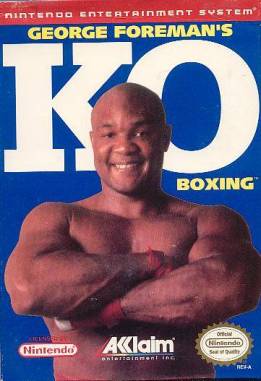
George Foreman's KO Boxing is a sports video game produced by Acclaim, featuring boxer George Foreman, released in 1992. Three years later, Acclaim released another game with Foreman: Foreman For Real.

Pro Wrestling, known as Gokuaku Doumei Dump Matsumoto in Japan, is a professional wrestling video game released for the Master System in 1986 by Sega. It centers around tag team wrestling, with four duos that players can select and guide to various championship titles around the world. Pro Wrestling was the only professional wrestling title released for the Master System in United States. The game has received mixed reviews, with publications criticizing the game's graphics and controls.
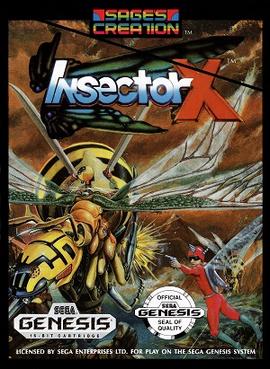
Insector X is a horizontally scrolling shooter developed by Hot-B and released in arcades by Taito in 1989. It was ported to the Mega Drive and Famicom.

The Punisher is a 1993 beat 'em up arcade game developed and released by Capcom. It stars the Marvel Comics' antihero the Punisher and co-stars S.H.I.E.L.D. agent Nick Fury as the second player's character as they embark on a mission to kill the crime lord the Kingpin and bring down his organization. While following the same general formula as Capcom's previous beat 'em ups, the game has a range of usable weapons and a comics-style presentation.
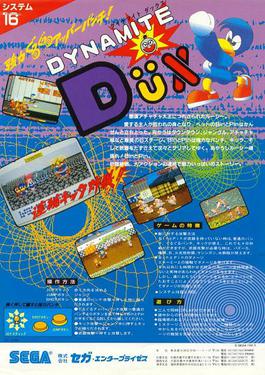
Dynamite Düx is a beat 'em up developed by Sega AM2 and released by Sega as an arcade video game in 1988. Produced by Yu Suzuki and with music composed by Hiroshi Kawaguchi, the game uses the Sega System 16 arcade board, the same board used for Golden Axe and Altered Beast. It was ported to the Master System, Amiga, Amstrad CPC, Atari ST, Commodore 64, and ZX Spectrum platforms in the following year. A Mega Drive version was planned but never released.

The Incredible Hulk is a 1994 video game released for the Mega Drive, Master System, Game Gear, and SNES. Developed by Probe Software and published by U.S. Gold, the game is based on the Marvel Comics superhero Hulk and showcases him within the context of a side-scrolling action game with platforming and beat 'em up elements. The narrative involves the Hulk attempting to thwart the world domination bid of his nemesis, the Leader, while engaging in combat with other arch-rivals.
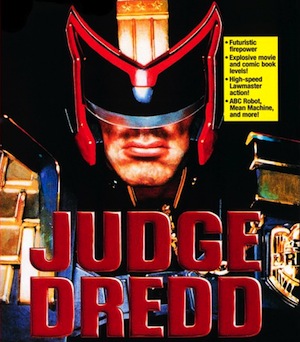
Judge Dredd is a side-view action video game released for the Super NES, Mega Drive/Genesis, Game Gear and Game Boy originally released in 1995. The game is based on the 1995 film Judge Dredd, which was itself an adaptation of the Judge Dredd strip from 2000AD.
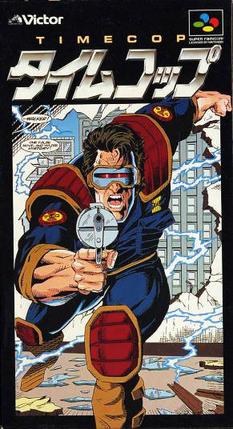
Timecop is a side-scrolling action video game produced by Cryo Interactive for the Super Nintendo Entertainment System in 1995. It is based on the 1994 film of the same title and takes place after the events of the film. Despite the use of digitized actors to portray the characters in the game, Jean-Claude Van Damme was not used to pose as protagonist Max Walker. Levels range from locales in the past, the present day, and a dystopian Los Angeles of the distant future.
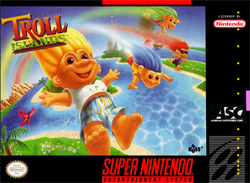
Super Troll Islands is a platform game based on the license of bright-haired toys known as Troll dolls. A Sega Genesis version was planned but never released.
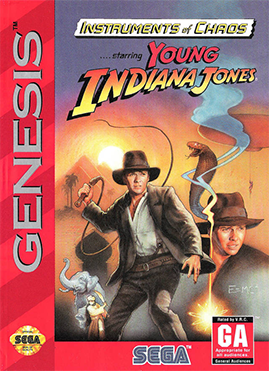
Instruments of Chaos starring Young Indiana Jones is a 1994 action game developed by Brian A. Rice, Inc. and published by Sega for the Sega Genesis. It is based on the television series, The Young Indiana Jones Chronicles. The game was in development as of August 1992, with the title Young Indiana Jones. A Sega CD version had been planned for release in July 1993, but it was never published.

Ghostbusters is a 1990 platform shoot 'em up video game developed and published by Sega for the Sega Genesis/Mega Drive. It features an original story based on the Ghostbusters films, and is unrelated to a 1984 Ghostbusters game by Activision. The game was released in the United States in August 1990, and was released in the United Kingdom later that year. A Brazilian version by Tec Toy was released for the console in 1991.




















